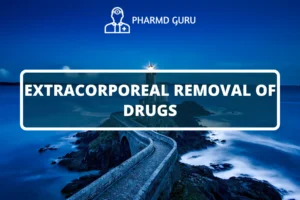TDM of Antipsychiatric drugs is a topic in Clinical Pharmacokinetics & Pharmacotherapeutic drug monitoring, which covers TDM of Lithium. It covers complete drug profile of Lithium.
SCROLL DOWN TO THE BOTTOM OF THE PAGE FOR ACTUAL NOTES.
Antipsychiatric drugs, also known as antipsychotics, are medications commonly used to treat psychiatric disorders such as schizophrenia and bipolar disorder. Therapeutic Drug Monitoring (TDM) plays a vital role in optimizing the use of antipsychotic medications by monitoring drug concentrations in the blood. In this article, we will explore the importance of TDM in the management of antipsychotic drugs and its clinical implications.
TABLE OF CONTENTS:
- Introduction
- Antipsychotic Drugs and their Mechanism of Action
- The Significance of TDM for Antipsychotic Drugs
- TDM Procedure for Antipsychotic Drugs
- Interpreting TDM Results
- Clinical Implications of TDM for Antipsychotic Drugs
1. Introduction
Psychiatric disorders such as schizophrenia and bipolar disorder can significantly impact an individual’s mental health and quality of life. Antipsychotic drugs are commonly prescribed to manage the symptoms associated with these conditions. However, the response to antipsychotic medications can vary widely among individuals, and TDM helps optimize treatment outcomes.
2. Antipsychotic Drugs and their Mechanism of Action
Antipsychotic drugs can be categorized into two main classes: typical antipsychotics and atypical antipsychotics. These medications work by modulating the activity of neurotransmitters in the brain, particularly dopamine and serotonin, which are involved in the regulation of mood, perception, and cognition.
3. The Significance of TDM for Antipsychotic Drugs
TDM is crucial in the management of antipsychotic drugs for the following reasons:
- Individualized therapy: Each individual responds differently to antipsychotic medications. TDM helps healthcare providers tailor the dosage and monitor drug concentrations to achieve optimal therapeutic effects while minimizing side effects.
- Optimizing efficacy: Maintaining appropriate drug levels is essential for maximizing the therapeutic effects of antipsychotic drugs and improving symptom control.
- Minimizing side effects: Antipsychotic medications can have a range of side effects, including extrapyramidal symptoms and metabolic disturbances. TDM helps identify drug concentrations associated with adverse effects, allowing for dose adjustments to minimize side effects.
- Detecting non-adherence: TDM can indirectly indicate medication non-adherence if drug levels are consistently below the therapeutic range. This information prompts healthcare providers to assess patient compliance and address any adherence issues.
4. TDM Procedure for Antipsychotic Drugs
The TDM procedure for antipsychotic drugs involves the following steps:
- Sample collection: Blood samples are collected from the patient to measure the concentration of the specific antipsychotic drug.
- Laboratory analysis: The blood samples are sent to a specialized laboratory equipped with appropriate assays to accurately quantify the drug levels.
- Interpretation: The TDM results are interpreted based on the specific drug’s therapeutic range, timing of sample collection, and individual patient characteristics.
5. Interpreting TDM Results
Interpreting TDM results for antipsychotic drugs requires consideration of several factors:
- Therapeutic range: Each antipsychotic drug has a target therapeutic range, which is typically defined as a range of concentrations associated with optimal efficacy and minimal side effects.
- Timing of sample collection: TDM can involve measuring trough levels (prior to the next dose) or peak levels (usually a few hours after the dose).
- Clinical correlation: TDM results should always be interpreted in the context of the patient’s clinical response, including symptom control and the occurrence of side effects.
6. Clinical Implications of TDM for Antipsychotic Drugs
TDM for antipsychotic drugs has several clinical implications:
- Optimizing dosing: TDM helps healthcare providers adjust the dosage of antipsychotic medications to achieve therapeutic drug levels in individual patients.
- Improving treatment outcomes: By maintaining drug concentrations within the therapeutic range, TDM enhances the effectiveness of antipsychotic drugs in managing psychiatric symptoms.
- Minimizing side effects: TDM allows for dose adjustments to minimize drug-related side effects, enhancing patient tolerability and adherence to treatment.
- Detecting treatment resistance: TDM can help identify cases of treatment resistance where therapeutic drug levels are not achieved despite adequate dosage, prompting healthcare providers to explore alternative treatment strategies.
ACTUAL NOTES:




